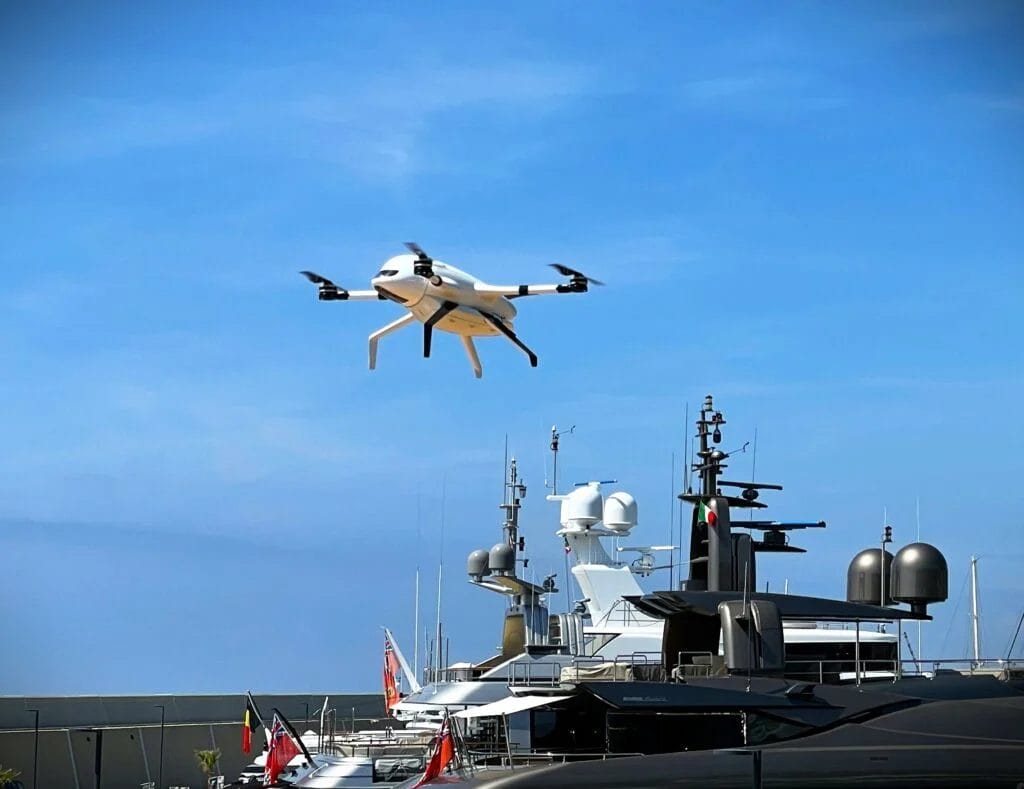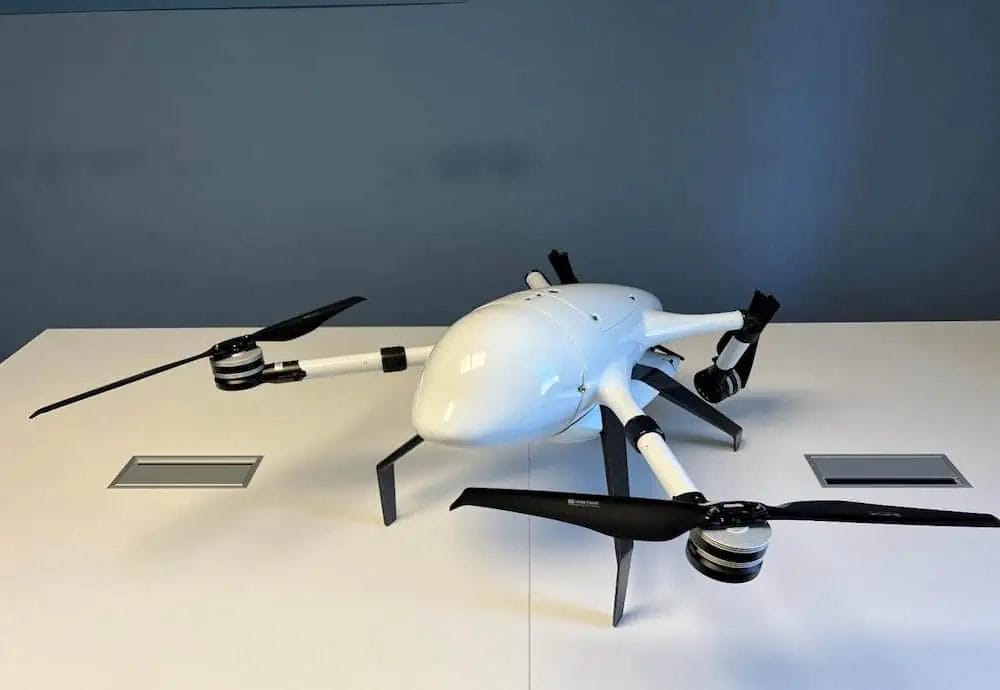Feature Article by EuroLink Systems – Unmanned Systems Technology (UST)
In this article, Andrea Lapiana, Engineering Lead for EuroLink Systems, explains why the company’s Beluga drone offers the optimal combination of reliability, speed and elegant design for the fast last-mile delivery of small parts and other materials.
1. Abstract
Companies today are searching for ways to apply drones to critical, logistics issues – many being applied to infrastructure inspection, repair, maintenance and support requirements. The driver behind this movement is that the conventional delivery and support mechanisms (vans/trucks) have become prohibitively expensive and in many instances not fast enough to respond effectively. This is particularly evident in rural areas and geographically rough or difficult terrain areas – although less pronounced – similar circumstances can exist in urban areas – given unexpected traffic conditions and other circumstances.
This situation has fostered the advent of the ‘last mile delivery’ utilization for drones, although this description, by itself, minimizes the value that drones can play.
Following the success of drones being applied to surveillance and remote sensing applications, drone delivery systems (serving a variety of use cases) have emerged, as a solution to reduce delivery costs, improve delivery time/turnaround and serviceability to target areas.
Autonomous Drone Delivery nodes are expected to become an integral element of the logistics industry.
Every logistics company that plans to deploy a drone delivery service is faced with many challenges and important issues, including how to achieve cost savings, how to operate drone fleets, how much reduction in expected delivery times could be achieved in the delivery process, and how to coordinate the scheduling of ground vehicles and autonomous drones (collaboratively) to achieve a cost-effective drone delivery system.
2. Overview
There are many aspects to consider when applying a drone solution to a specific, use case application including: charging center location relevant to the target site, battery swapping, round-trip distance to target location, payload capacity, drone speed/ETA, priority-level of target need, potential obstructions in drone path/other delivery route constraints, weather conditions – high winds, rain, snow and other environmental challenges, Operator-to-drone relationship, etc.
These aspects and others are key to the flight projection plan and program defined by the user. They are also the criteria needed to reference and select the right drone for the job – whether it is a dedicated drone or SWARM operation.
In the case of ‘small part delivery’ – the emphasis is on the ‘task at hand,’ which could satisfy a range of demands – from the delivery of critical blood/plasma or medical supplies to first responders, to repair parts for maintenance crews, to small equipment needed by remote workers, etc. – the range of possibilities is unlimited – although the common denominator is the sense of urgency relative to other means of transport to solve the problem.
It will be essential for companies to develop performance metrics and optimization techniques (over time) to deliver small parts to the target location in the least amount of time. Following this logic – it is predictable, as experience is gained – that companies will also develop cost-structures that will support the utilization of drones by job or task performed.
Drones come in many shapes and sizes, although for this discussion – we will concentrate on the utilization of quadcopters with an emphasis on Eurolink’s Beluga family of mini-drones.
From a design perspective, Beluga was conceived from a target application and user vantage point first and with an Ecosystem approach in mind.
3. Technical Overview
Nowadays the current demand for small parts delivery and logistics has resulted in a range of new capabilities being developed that deliver reliable and cost-effective solutions.
In this domain, Beluga, the state-of-the-art product from Eurolink Systems is an excellent union between reliability, speed and elegant design for the fast delivery of small parts and other materials.
The basic configuration, tested up to 100 km/h, has been enriched nowadays with an aerodynamic cargo-bay – able to host many devices with 2.5 L of payload capacity.
Beluga could also take off and land in small area (due to precision landing feature) and capabilities to avoid collision due to his obstacle detection.

Although the dimensions of Beluga are streamlined, the capabilities to carry up to 8 lb of payload capacity at high speed allows the Beluga to solve emergency activities like carrying critical medical transport (like blood/plasma/supplies) or to support telecommunications, in order to restore connection during natural disasters or for day-by-day operational activities.
The Carbon fiber makes Beluga resilient from EMI and resistant to wind (up to 40 km/h) due to its advanced propulsion system and aerodynamic design. Beluga is resilient to a range of weather conditions making it a versatile platform and a standout from other drone platforms within its class.
4. Conclusions and Perspectives
Consistent with the standard approach, EuroLink is ready to customize the system for the target application, which will result in jointly defined, Requirements Definition/SOW. Furthermore, EuroLink is eager to collaborate on overall mission goals, project plan, flight path to target destinations, etc. – to configure the right Beluga solution to fit the target need. That includes a demonstration program with actual payload items (smart phones, other devices, etc.) – common to the application. EuroLink can translate these efforts into Proposals for consideration.
